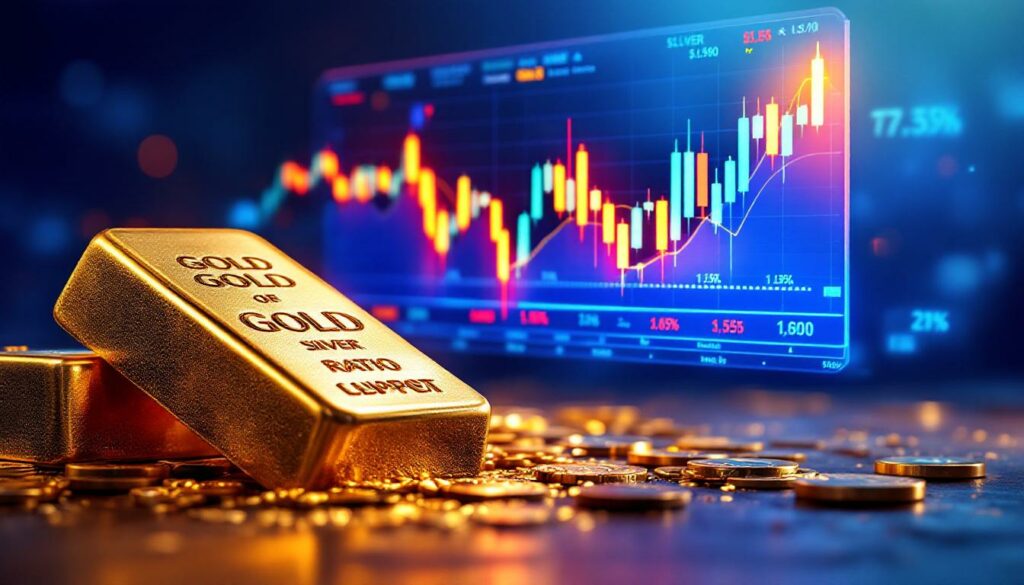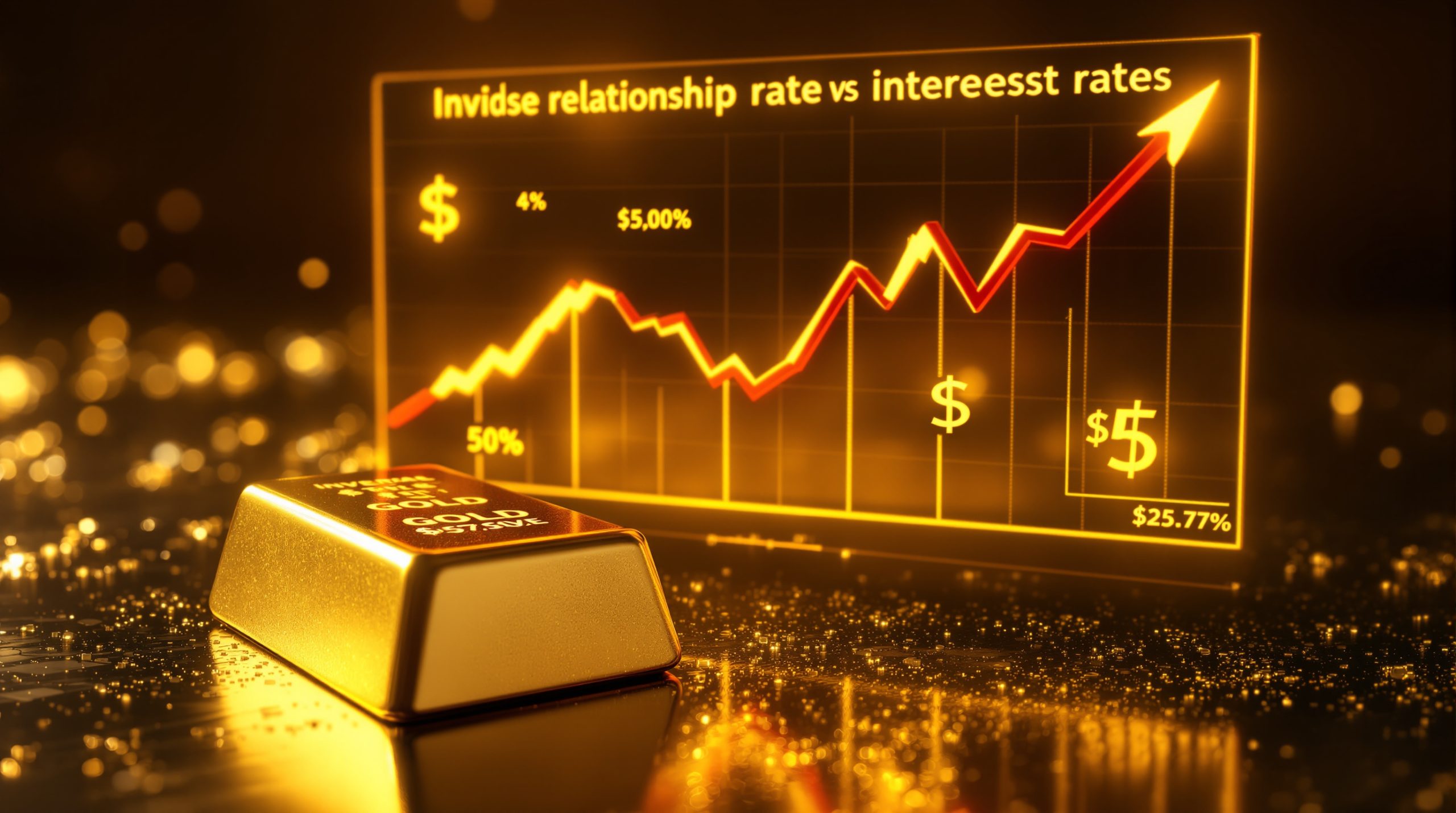What's Driving Gold's Current Consolidation Phase?
Gold has entered a typical summer consolidation phase, trading sideways around $3,320 after reaching all-time highs analysis of $3,500 earlier in the year. This pattern reflects seasonal market behavior characterized by lower trading volumes and reduced speculative activity during summer months. The current sideways movement represents a healthy digestion period following the significant price appreciation seen since the beginning of 2024.
"Gold isn't very likely to go below $3,000 but rather trade sideways, consolidate that big move since the beginning of the year," notes Florian Gumis of Midas Touch Consulting, highlighting the strength of the underlying bull market despite short-term price fluctuations.
Understanding the Summer Trading Pattern
Historically, gold often experiences a lull during summer months as institutional trading desks thin out and retail investor participation decreases. This seasonal pattern typically creates a consolidation phase where prices oscillate within a defined range before potentially resuming their broader trend in autumn.
The current consolidation has been accompanied by a pullback of approximately $135 over four trading sessions, which aligns with historical summer volatility patterns. Rather than signaling a reversal, this price action represents a normal breathing period within the longer-term uptrend.
Technical Support Levels and Resistance
Gold has established strong technical support around $3,285-$3,300, with previous lows around $3,120 quickly recovering. These support zones have proven resilient during recent pullbacks, attracting buyers at these levels. This price behavior demonstrates underlying strength in the gold market despite temporary downward pressure.
The price has tested the $3,450 resistance level multiple times without breaking through, creating a defined trading range. This repeated testing of resistance without breaking down below key support levels suggests accumulation rather than distribution is occurring within this gold technical analysis consolidation pattern.
- Strong support zone: $3,285-$3,300
- Previous low with quick recovery: $3,120
- Key resistance level: $3,450
- Recent pullback magnitude: ~$135 over four sessions
Impact of Market Mechanics
Recent market mechanics have influenced short-term price action significantly. The COMEX August contract options expiry created temporary downward pressure, a common occurrence in the futures markets. As Gumis explains, "The COMEX August contract options expiry creates temporary downward pressure as market participants position themselves to ensure most options expire worthless."
This technical factor, combined with seasonal patterns, has contributed to the recent pullback. Additionally, the 10-year Treasury yield hovering around 4.34% has created a competing interest-bearing alternative that temporarily pressures non-yielding assets like gold.
Market Insight: The predictable nature of options expiration dates offers strategic entry opportunities for investors who understand these cyclical pressures on gold prices.
Is Silver Preparing for a Breakout?
Silver has shown remarkable resilience during gold's consolidation phase, suggesting underlying strength and potential for significant upside. Currently trading around $38, silver has gained approximately 23% since April, yet this advance exhibits characteristics that differentiate it from previous bull markets.
Silver's Unique Price Action Pattern
Unlike historical silver bull markets characterized by explosive, parabolic moves, the current uptrend has featured moderate impulsive rallies followed by multi-week consolidations. This measured advance suggests a more sustainable uptrend driven by physical demand rather than speculative excess.
"Silver has been moving in a less impulsive manner than historically observed," notes Gumis. "This measured advance suggests genuine physical demand rather than speculative froth driving prices higher."
This pattern of controlled advances followed by healthy consolidations creates a stair-stepping pattern on the charts, which technical analysts generally view as more sustainable than vertical price moves. The lack of speculative excess in silver's current uptrend indicates potential for a longer-duration bull market with less risk of a sudden reversal.
The Gold-Silver Ratio Perspective
The gold-silver ratio analysis remains historically elevated at approximately 87:1, significantly above its long-term average of around 60:1. This metric indicates silver remains undervalued compared to its historical relationship with gold.
From a historical perspective, the ratio tends to compress during precious metals bull markets as silver typically outperforms gold in the later stages of these cycles. The current elevated ratio suggests substantial potential upside for silver relative to gold as the bull market matures.
- Current gold-silver ratio: ~87:1
- Long-term historical average: ~60:1
- Historical bull market lows: Below 40:1
This ratio analysis provides a fundamental case for silver outperformance in the coming months and years, complementing the technical setup.
Key Price Levels to Watch
The $37.50 level represents a critical technical threshold for silver. With prices currently hovering around $38, maintaining support above this level would validate the current consolidation phase as constructive rather than corrective.
Looking ahead, a decisive move above $40 would signal a potential acceleration toward the psychologically important $50 mark, which represents a major historical resistance level dating back to 1980 and 2011 price peaks.
From a long-term perspective, silver has formed a multi-decade cup-and-handle pattern on the charts, with price targets ranging from $100 to potentially $500 per ounce upon completion. While these targets may seem ambitious, they align with technical projections based on this rare but powerful pattern formation.
Technical Insight: The cup-and-handle pattern in silver, forming over decades rather than months, suggests potential for price targets that far exceed previous all-time highs once a decisive breakout occurs.
When Will Precious Metals Break Out of Consolidation?
The timing of a potential breakout from the current consolidation phase requires analysis of seasonal patterns, technical developments, and potential catalysts that could drive prices higher.
Timeframe for Potential Breakout
The current consolidation phase could persist through the summer months, potentially extending into early autumn. This aligns with historical seasonal patterns in precious metals markets, where summer doldrums typically give way to increased activity in September-October.
Seasonal analysis of gold and silver prices over the past decade shows that the final quarter of the year often delivers stronger performance than the third quarter. This pattern suggests investors should prepare for potential entry opportunities as summer transitions to fall.
"Prepare for entry opportunities in September-October," advises Gumis, highlighting the importance of patience during the current gold price consolidation rather than forcing positions during typically low-volume summer trading.
Catalysts for Higher Prices
Several potential catalysts could trigger a breakout from the current trading range in the coming months:
-
Federal Reserve Policy Shifts: While the Fed is expected to maintain current rates in the near term (with a 97% probability according to CME FedWatch data), any indication of future rate cuts would likely benefit precious metals. Market expectations for eventual cuts, despite current Fed rhetoric, could drive anticipatory buying.
-
Escalation of Geopolitical Tensions: The ongoing US-China trade negotiations represent a significant geopolitical risk factor. Any deterioration in relations or imposition of new tariffs could trigger safe-haven buying in precious metals.
-
Increased Physical Demand: Central bank gold purchasing continues to provide underlying support for the market. Any acceleration in official sector buying, particularly from BRICS nations seeking to reduce dollar dependence, could catalyze higher prices.
-
Seasonal Market Participation: The return of institutional investors and increased trading volumes following the summer period typically provides greater momentum to established trends.
Price Targets for Year-End
Technical analysis suggests gold could reach $4,000+ by year-end if it successfully breaks above the $3,500 resistance level. This target represents approximately a 15-20% increase from current levels, which aligns with historical momentum phases in bull markets.
For silver, a move toward the $50 level appears increasingly likely in the second half of the year, representing a potential 30% gain from current levels. The long-term cup-and-handle pattern mentioned earlier suggests even greater upside potential over a multi-year timeframe.
Investment Perspective: The measured nature of the current precious metals advance suggests potential for sustained price appreciation rather than a boom-bust cycle, benefiting investors who maintain strategic investment strategies through consolidation phases.
How Are Mining Stocks Performing During Consolidation?
While physical metal prices consolidate, mining stocks have demonstrated interesting performance dynamics that offer insights into potential future price movements for the underlying metals.
Silver Miners Leading Performance
Silver mining stocks have demonstrated particularly strong performance despite the metal's consolidation phase. This sector strength often serves as a leading indicator for the underlying metal prices, as sophisticated investors position ahead of anticipated price movements.
Notable performers in the silver mining sector have seen substantial gains, with some stocks up over 100% in recent months. This outperformance relative to physical silver suggests smart money positioning ahead of anticipated higher silver prices in the coming months.
The strong performance of silver miners despite the metal's consolidation further supports the thesis that the current price action represents a pause within an ongoing bull market rather than a reversal of trend.
Merger and Acquisition Activity
The precious metals sector has experienced significant M&A activity, particularly in Mexico, with several major acquisitions announced recently:
- Coeur Mining's $1.7+ billion acquisition of Silvercrest Metals
- First Majestic Silver's purchase of Gatos Silver
- Pan American Silver's acquisition of MAG Silver
This consolidation activity indicates producer confidence in both the sector outlook and improving jurisdictional stability in key mining regions. Companies typically don't commit significant capital to acquisitions unless they anticipate favorable pricing environments for their products.
The concentration of M&A activity in Mexico specifically suggests improving sentiment toward the jurisdiction following recent elections and policy clarifications. This jurisdictional rehabilitation has reduced risk premiums previously applied to Mexican mining assets.
Junior Miners vs. Major Producers
While major producers with strong cash flows have performed well, the junior mining segment is showing signs of renewed interest after a prolonged period of underperformance. Recent financings have been oversubscribed, indicating improving sentiment toward exploration and development-stage companies.
However, junior mining indices remain well below their 2012 highs, suggesting significant potential upside as the precious metals bull market matures. This disparity between large producers and junior explorers creates potential opportunities for investors willing to accept higher risk for greater potential returns.
The junior mining sector typically demonstrates leverage to metal prices in bull markets, often outperforming both physical metals and major producers once sentiment shifts decisively positive. The current early-stage recovery in this segment suggests potential for acceleration as the broader bull market develops.
Sector Insight: The sequence of performance in precious metals bull markets typically begins with physical metals, followed by major producers, and finally junior explorers and developers. The current performance pattern suggests we're transitioning from the first to second phase of this sequence.
How Does the Macro Environment Impact Gold and Silver?
The broader macroeconomic landscape provides the fundamental backdrop against which precious metals prices move. Understanding these relationships helps investors contextualize current price action and anticipate potential future developments.
Federal Reserve Policy Implications
The Federal Reserve's monetary policy stance remains a key driver for precious metals. With the Fed expected to maintain current rates in the near term despite market expectations for eventual cuts, gold and silver prices may experience temporary pressure.
According to CME FedWatch data, there is a 97% probability the Fed will maintain current rates at its next meeting. However, persistent inflationary pressures and geopolitical tensions provide underlying support for precious metals despite this temporarily hawkish stance.
The divergence between Fed rhetoric and market expectations creates an interesting dynamic for gold and silver. While Fed officials maintain a higher-for-longer narrative, markets continue to price in eventual rate cuts, creating a constructive environment for precious metals despite short-term volatility.
Dollar Strength and Treasury Yields
The US dollar's recent strength to five-week highs and the 10-year Treasury yield hovering around 4.34% have created headwinds for precious metals. Traditionally, dollar strength and higher real yields pressure gold and silver prices due to their non-yielding nature.
However, these factors appear to be largely priced into current levels, with gold and silver demonstrating resilience despite these typically negative correlations. This suggests underlying demand fundamentals are offsetting traditional macroeconomic headwinds.
The recent behavior of precious metals relative to the dollar and yields indicates a potential shift in market dynamics, where geopolitical concerns and long-term inflation expectations may be outweighing short-term interest rate considerations.
Inflation and Purchasing Power Concerns
The ongoing erosion of fiat currency purchasing power globally continues to drive long-term investment demand for precious metals. This "cracker boom" environment, where asset prices rise across various sectors due to monetary devaluation rather than economic strength, creates a supportive backdrop for gold and silver as wealth preservation assets.
Despite official inflation statistics showing moderation, real-world purchasing power continues to decline across major economies. This reality drives persistent demand for hard assets with limited supply, particularly among high-net-worth individuals and institutional investors seeking to preserve wealth.
Federal Reserve balance sheet data shows that despite modest reductions, overall monetary expansion remains at historically elevated levels, creating a foundation for continued precious metals strength even as inflation statistics moderate.
Economic Perspective: The "cracker boom" phenomenon refers to asset inflation driven by monetary expansion rather than productivity or economic growth – creating an environment where nominal prices rise while real purchasing power declines, benefiting scarce assets like precious metals.
What's the Investment Strategy for the Current Market?
Navigating consolidation phases requires different strategies than trending markets. Understanding how to position portfolios during these periods can help investors avoid common pitfalls while preparing for potential breakouts.
Patience During Summer Doldrums
The optimal approach during summer market conditions is patience rather than aggressive positioning. Lower trading volumes can create misleading price signals and increased volatility without directional conviction.
"Investors should avoid chasing the market during this period," advises Gumis, suggesting instead that they "prepare for potential entry opportunities in September-October" when seasonal patterns often favor precious metals.
Historical analysis shows that emotional reactions to summer volatility typically lead to suboptimal results. The discipline to await higher-probability setups in autumn often yields better performance than attempting to time every minor movement during low-liquidity summer conditions.
Asset Allocation Considerations
For investors holding cash positions, a measured approach to deployment makes sense in the current environment. Rather than full investment at current levels, maintaining liquidity for potential better entry points later in the year aligns with seasonal patterns and technical setups.
Warren Buffett's Berkshire Hathaway provides an instructive example of patient capital deployment, maintaining substantial cash reserves ($157 billion as of Q1 2024) while awaiting attractive opportunities. This approach, scaled to individual investor circumstances, offers a template for navigating consolidation phases.
A staggered entry strategy using predetermined price levels can help remove emotion from investment decisions while ensuring participation if markets move directionally before anticipated seasonal strengthening.
Physical Metal vs. Mining Stocks
Silver continues to offer compelling value relative to gold for physical metal investors. The elevated gold-silver ratio suggests greater potential upside for silver, particularly as industrial demand continues to grow from green energy applications.
For those seeking leverage to metal prices, junior mining companies and explorers may offer significant upside potential as the bull market matures, though with correspondingly higher risk profiles. These companies typically demonstrate 2-3x leverage to metal prices in bull markets, with potential for significantly greater returns upon exploration success.
A balanced approach combining physical metals with selectively chosen mining equities allows investors to benefit from both wealth preservation attributes and potential appreciation opportunities as the precious metals cycle progresses.
Strategy Insight: Rather than attempting to predict exact timing of market moves, successful precious metals investors often employ tranched buying during consolidations, allowing them to average into positions while maintaining flexibility for potential lower prices.
FAQ: Gold and Silver Investment Questions
Will gold drop below $3,000 during this consolidation?
Based on current technical support levels and fundamental drivers, a drop below $3,000 appears unlikely. The strong support zone between $3,120-$3,300 has consistently attracted buyers, and the underlying bullish factors remain intact despite the consolidation phase.
CBOE options data shows limited put positioning below the $3,000 level, indicating professional traders assign low probability to this scenario. Additionally, central bank buying typically accelerates on significant dips, providing a floor under prices.
The substantial distance between current price levels ($3,320) and the $3,000 threshold would require a significant catalyst to breach, which appears absent in the current market environment barring unforeseen global shocks.
What could trigger silver to finally break above $50?
A combination of factors could propel silver above $50, including:
-
Industrial Demand Growth: Continued expansion in solar panel production, electric vehicles, and electronics manufacturing. Silver's unique properties make it difficult to substitute in many high-growth technologies.
-
Investment Demand Surge: Rising inflation concerns or financial system stress could drive physical investment demand. Silver's dual monetary/industrial nature makes it particularly attractive during periods of economic uncertainty.
-
Supply Constraints: Silver primarily comes as a byproduct of base metal mining. Environmental regulations and declining ore grades in major producing regions could limit new supply.
-
Technical Breakout: A decisive move above $40 could trigger momentum buying as the metal approaches the psychologically important $50 mark.
The Silver Institute data shows industrial demand reaching record levels in recent years, creating a foundation for potential price appreciation as investment demand potentially accelerates.
How do geopolitical tensions affect precious metals prices?
Geopolitical tensions typically support precious metals prices
Looking to Invest in the Next Major Mineral Discovery?
Discover significant ASX mineral discoveries as they happen with Discovery Alert's proprietary Discovery IQ model, which instantly transforms complex mineral data into actionable insights. Understand why historic discoveries can generate substantial returns by visiting Discovery Alert's dedicated discoveries page and begin your 30-day free trial today to position yourself ahead of the market.




